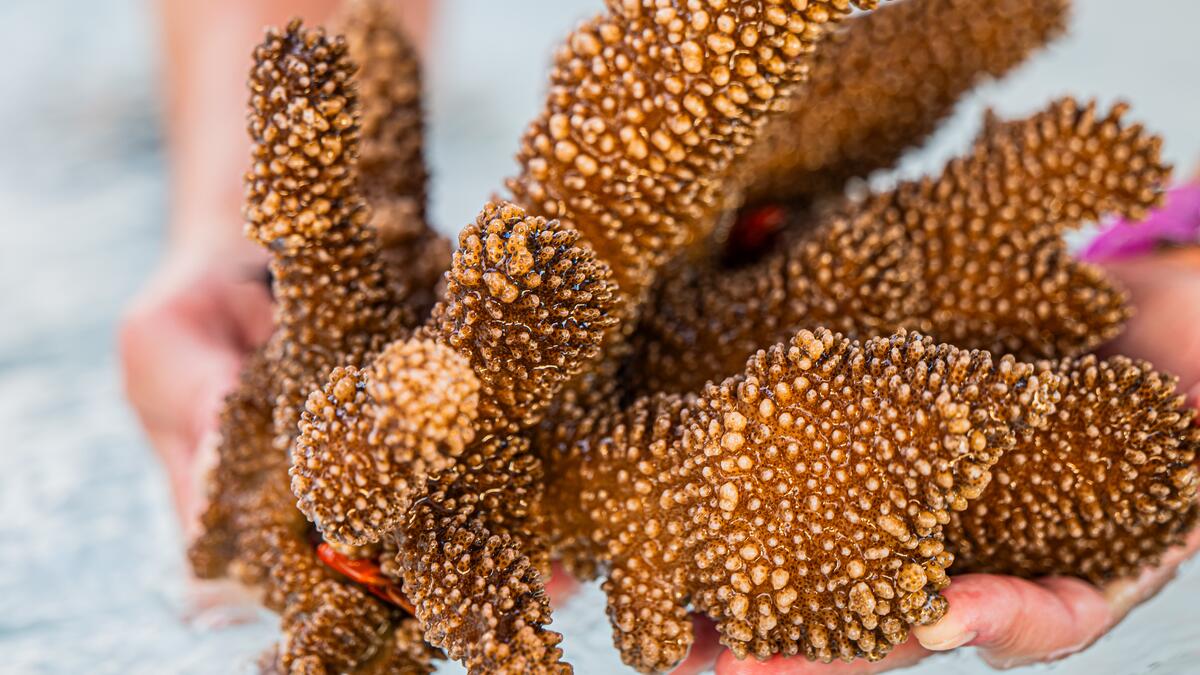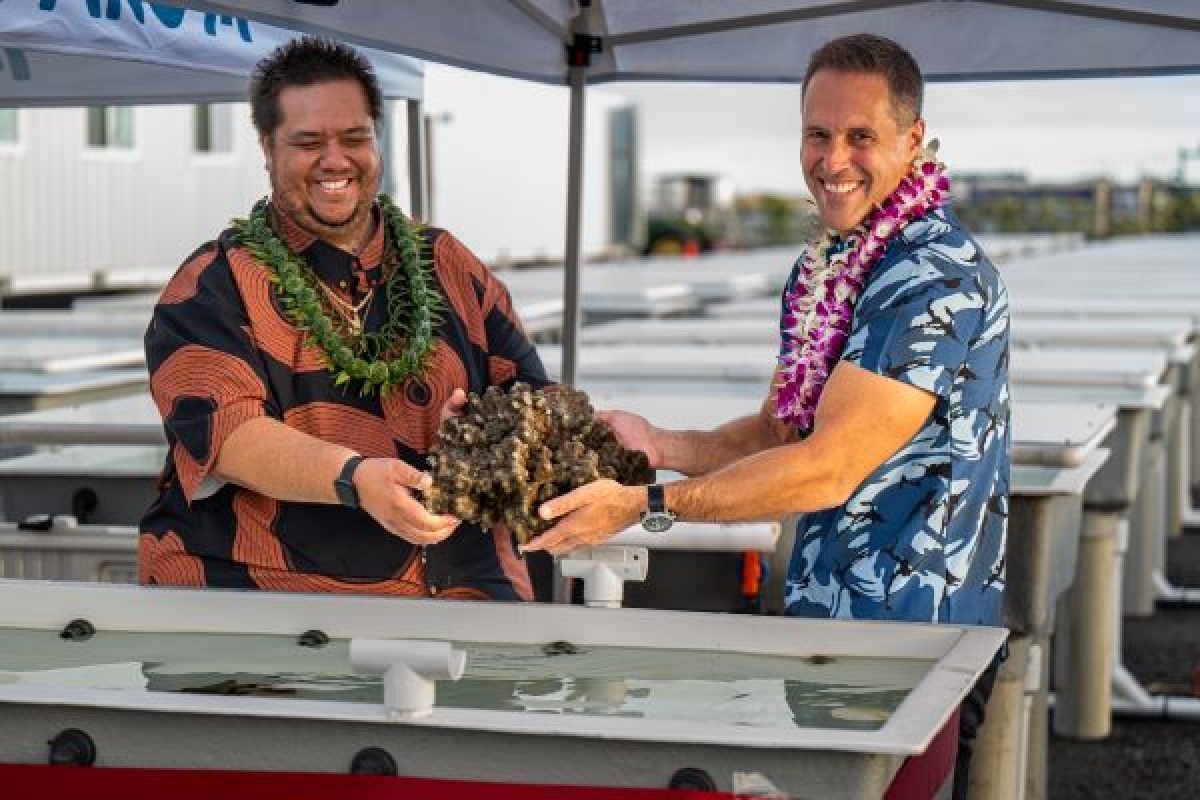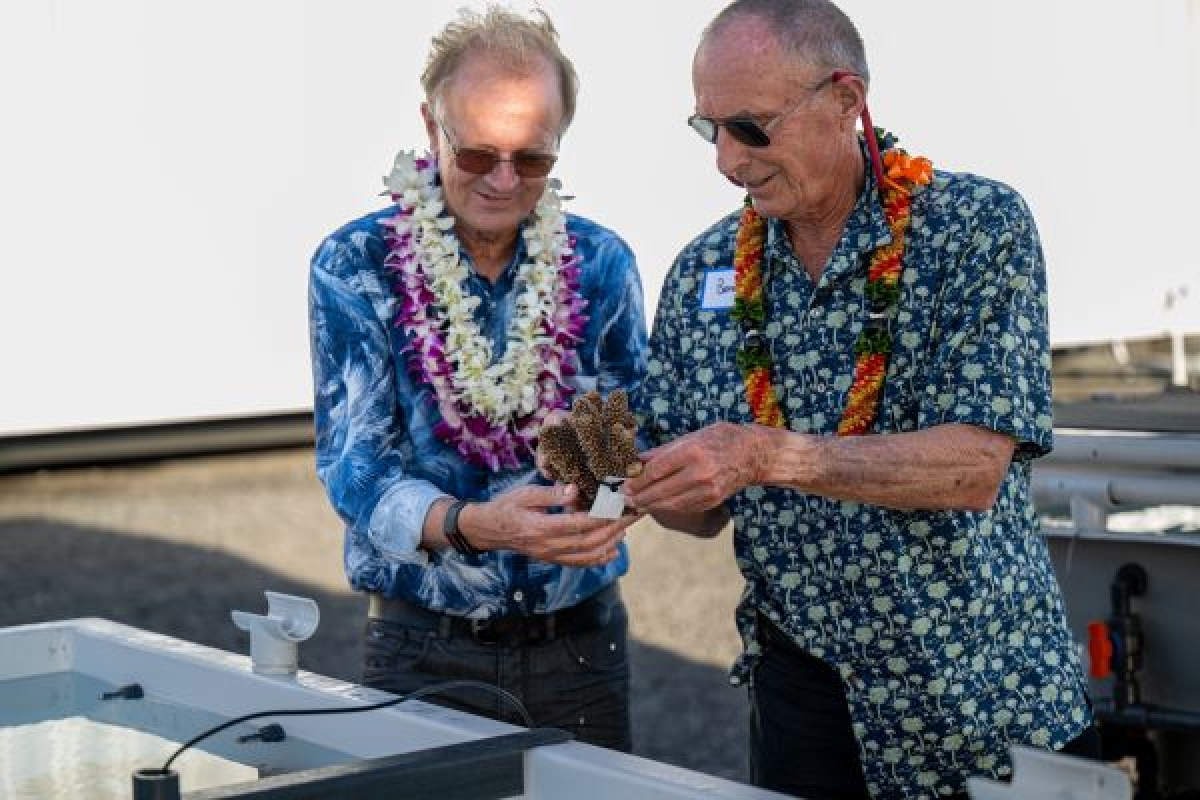Reef restoration program celebrates official opening of state-of-the-art coral reef facility

Photo by Matt Gutierrez
When the ʻĀkoʻakoʻa reef restoration program was established in 2023, it brought together decades of research, community partnerships and a commitment to healthy coral reefs in West Hawaii. On April 25, scientists and community members affiliated with ʻĀkoʻakoʻa celebrated an important expansion of the work done through this initiative: the official launch of a new, state-of-the-art coral research and propagation facility in Kailua-Kona.
A ribbon-cutting ceremony at the Ridge to Reef Restoration Center took place to celebrate the opening of the new facility. Greg Asner, director of Arizona State University’s Center for Global Discovery and Conservation Science and founder of ʻĀkoʻakoʻa, said the new facility will serve as a kind of medical facility for corals, housing broken corals that require care to recover, grow and reproduce.
Varying technical methods of coral reef restoration will take place in the coral nursery, led by team members from ASU, partners from the State of Hawaii’s Division of Aquatic Resources and other partners on the island. The facility consists of 72 coral raceways, or tanks, and is the first land-based coral nursery facility on the island. This facility will support the restoration of 120 miles of coral reefs off the west coast of the Big Island, which have been in decline for the past 50 years.
“We are here because Hawaii's coral reefs are in trouble,” Asner, also a senior Global Futures scientist with the Julie Ann Wrigley Global Futures Laboratory at ASU, said during the ceremony. “Our vision of a thriving coastline would be impossible to achieve without our generous donors, our site partners, our cultural advisory group, our community partners and everyone who has played a role. We have challenges ahead of us, but this is the ultimate winning team.”
The many ASU team members engaged with ʻĀkoʻakoʻa include molecular ecologists, remote sensing experts, dive teams, environmental educators, hydrologists and systems engineers. Asner said other ASU researchers and on-site collaborators will greatly contribute to the care of the corals that come into the facility: A diagnostics team will measure and monitor the reefs and water quality to diagnose the problems, and a restoration team will act on that diagnosis.
Jeana Kelekolio, a Native Hawaiian lineal descendant of Hōnaunau Bay and cultural advisor to ʻĀkoʻakoʻa, said that her family relies on the sea and its corals. With a decline in coral reef health and the rise of coral bleaching events, she has directly felt the impact.
“Our families from all over Hawaii can see the difference: Our fish are not there, our limu (seaweed) is gone,” she said. “But I am so excited to be here at this launch today. Our culture shouldn’t die with my 14-year-old grandsons — they should know how to survive and be cultural practitioners like me and my father before me. ... (They should know) how to take care of the ocean, the reef, the limu. We all have to work together as one family, for the greater good, for the future of our culture and for the future of tourism. I believe we can work hand in hand to make that happen.”
Peter Schlosser, the vice president and vice provost of Global Futures at ASU, said at the event that coral reefs are one of the most sensitive indicators of overall planetary health. The decline in coral reef health, he said, is directly tied to humanity pushing the boundaries of Earth’s life-supporting systems. However, this new facility represents a positive shift.
“We are in a situation where we need to change,” Schlosser said, “and what is being done here in Hawaii is a significant step forward. We see that reflected in the scale and holistic approach of this facility, but we also see it in the connectivity between the environmental and cultural value of coral reefs. I visited this site while it was under construction — to see this facility officially built is phenomenal.”
More Environment and sustainability

ASU team creates decision-making framework to improve conservation efficiency
Conserving the world’s ecosystems is a hard job — especially in times of climate change, large-scale landscape destruction and the sixth mass extinction. The job’s not made any easier by the fact…

Mapping the way to harvesting water from air
Earth’s atmosphere contains about 13 trillion tons of water.That’s a lot of water to draw upon to help people who are contending with drought, overtaxed rivers and shrinking aquifers.In fact,…

ASU researchers test environmental risks of tire emissions on Arizona highways
The Greater Phoenix area’s roadway grid system is the envy of urban planners everywhere, and the Arizona Department of Transportation, or ADOT, strives for…



